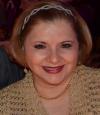
|
Authors | Institution |
|
Adelina Alcorta Garza* Dulce Victoria Varela Rojas* Martha Cantu Cavazos* Marco Vinicio Gomez Meza** Jesus Gutierrez*** Juan Francisco Gonzalez Guerrero* |
* University Hospital "Jose E. Gonzalez", Autonomous University of Nuevo Leon, Monterrey, Mexico ** Economy School, Autonomous University of Nuevo Leon, Monterrey, Mexico *** Metropolitan Hospital "Bernardo Sepulveda", Health Secretariat, Monterrey, Mexico |
 |
|
||||||
| Psychopathology and psychosocial health in Mexican medical residents |
Physicians are vulnerable to psychopathology. The self-perception of it might contribute to self-consciousness regarding the care they deserve. There is much resistance to this self-knowledge.
We believe that the greater their psychosocial health is, the greater their ability to adapt and overcome their psychopathology will be, and thus both aspects should be studied at once.
The objective of this study was to identify Axis I psychopathology, according to the DSM-IV, and psychosocial health self-report (RSPH) on medical professionals.
With this purpose, RSPH was obtained from 70 postgraduate medical students at two public hospitals in Mexico by administering the following instruments:
1) the Violence Exposure Questionnaire,
2) the Scale of Efficiency in Family Functioning (E-EFF17),
3) the General Health Questionnaire (GHQ-28) and 4) the Stressful Life Events Scale (SLES).
Psychopathology was explored with the Symptom Checklist-90-R (SCL-90-R).
The mean age of the subjects was 28; 33 were female and 37 were male.
In the SCL-90-R, obsessive-compulsive disease, depression, interpersonal sensitivity and hostility were found to be the most frequent psychopathologies (0.59, 0.55, 0.41 and 0.4, respectively; SD ± .73, .75, .68 and .61).
A total of 111 out of 168 correlations were significant (p ≤ 0.05) among different variables in the four instruments, which sustains that there is an association between psychopathology and stress and psychosocial health in medical residents.
There was statistical significance between the SCL-90-R dimensions and the somatic symptoms, anxiety, insomnia, social dysfunction and depression index, which implies that with greater the psychological discomfort, the greater those indexes become.
|
Index |
Somatic Symptoms |
Anxiety and Insomnia |
Social Disfunction |
Depression |
|
SOMAT |
.582(**) |
.682(**) |
.329(**) |
.318(**) |
|
OC |
.546(**) |
.535(**) |
.473(**) |
.407(**) |
|
SI |
.447(**) |
.566(**) |
.442(**) |
.474(**) |
|
DEP |
.651(**) |
.725(**) |
.436(**) |
.460(**) |
|
ANX |
.660(**) |
.771(**) |
.420(**) |
.530(**) |
|
HOS |
.564(**) |
.730(**) |
.497(**) |
.493(**) |
|
FOB |
0.203 |
.331(**) |
0.184 |
.363(**) |
|
PAR |
.341(**) |
.514(**) |
.318(**) |
.492(**) |
|
PSY |
0.217 |
.370(**) |
.319(**) |
.288(*) |
|
** Correlation is significant at the 0.01 level (2-tailed). * Correlation is significant at the 0.05 level (2-tailed). |
||||
Regarding the E-EFF17, there was statistical significance with the Global Severity Index, resulting in diminished identity, stability and family growth when severe psychological discomfort exists.
|
Index |
Coherence |
System Mantainance |
Individualization |
System Change |
Total EEFF17 |
|
Somatic Symptoms |
-0.133 |
-.275(*) |
-0.138 |
-0.134 |
-.273(*) |
|
Anxiety and Insomnia |
-0.131 |
-.262(*) |
-0.084 |
-0.155 |
-.246(*) |
|
Social Dysfunction |
0.067 |
-.235(*) |
-0.071 |
-0.032 |
-0.2 |
|
Depression |
-.257(*) |
-0.15 |
-0.078 |
-0.12 |
-0.177 |
|
General Health |
-0.088 |
-.303(*) |
-0.137 |
-0.132 |
-.298(*) |
|
** Correlation is significant at the 0.01 level (2-tailed). * Correlation is significant at the 0.05 level (2-tailed). |
|||||
The total rate from the SLESS was statistically significant regarding all 9 dimensions of the SCL-90-R and all the GHQ-28 sub-scales; thus the grater the stress, the grater the psychological discomfort, the depression, the social dysfunction, the anxiety and insomnia, and the somatic symptoms.
|
Index |
Overall Stress Rate |
|
SOMAT |
.469(**) |
|
OC |
.497(**) |
|
SI |
.478(**) |
|
DEP |
.512(**) |
|
ANX |
.499(**) |
|
HOS |
.447(**) |
|
FOB |
.345(**) |
|
PAR |
.329(**) |
|
PSY |
.335(**) |
|
** Correlation is significant at the 0.01 level (2-tailed). * Correlation is significant at the 0.05 level (2-tailed). |
|
Statistical significance was also found among rates of depression and those students who reported some form of abuse (12.58 vs. 4.33 in those who did not report abuse).
Psychopathology related to stress and psychosocial health was reported by health professionals.
It was found that the higher the level of psychosocial health (comprised by family well-being, general health index and low self-reported violence), the lower the psychopathology and stress level in health professionals.
More attention should be paid to the psychosocial health of medical professionals and its impact on their well-being and their performance as care providers.
1. Aranda-Beltrán, C., Pando-Moreno, M., Torres-López, T., Salazar-Estrada, J., Franco-Chávez, S. (2005). Factores Psicosociales y Síndrome de Burnout en Médicos de Familia. México. An Fac Med Lima 2005; 66(3).
2. Aranda, C., Pando, M., Velázquez, I., Brizuela, Acosta, M., Péraz, M. (2003). Síndrome de Burnout y Factores Psicosociales en el Trabajo, en Estudiantes de Postgrado del Departamento de Salud Pública de da Universidad de Guadalajara, México. Rev Psiquiatría Fac Med Barna;30(4):193-19.
3. Blandin, J., Martínez-Araujo, D. (2005). Estrés Laboral Y Mecanismos de Afrontamiento: su Relación en la Aparición del Síndrome de Burnout en Médicos Residentes del Hospital Militar “Dr. Carlos Arvelo”. Archivos Venezolanos de Psiquiatría y Neurología, 51(10)104.
4. Martínez-Lanz, P., Medina-Mora, M., Rivera, E. (2005). Adicciones, Depresión y Estrés en Médicos Residentes. Rev Fac Med UNAM Vol.48 No.5.
5. Pompili, Rinaldi, Lester, Girardi, Ruberto, Tatarelli, (2006). Hopelessness and Suicide Risk Emerge in Psychiatric Nurses Suffering from Burnout and Using Specific Defense Mechanisms. Archives of Psychiatric Nursing, Volume 20(3):135-143.
 Send Email
Send Email
